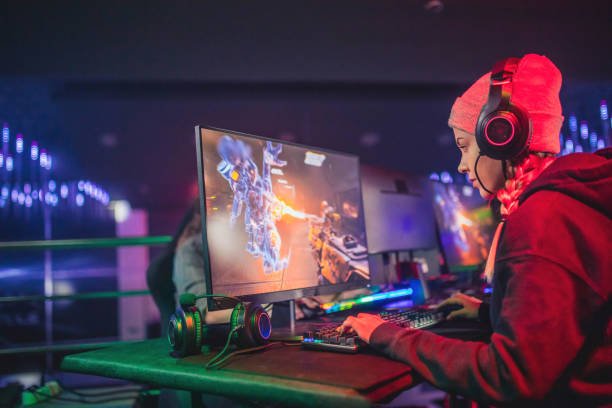Introduction: Could Your Game’s Sound Be the Missing Piece?
In today’s hyper-competitive gaming market, stunning visuals and tight mechanics are just the baseline. What truly captivates players is emotional resonance and memorable experiences. That’s why Gaming Harmonicode – a seamless fusion of music harmony and in-game logic – is emerging as a powerful new frontier. Think dynamic soundscapes that react, shape, and drive gameplay in real time.
In this blog, we’ll explain what Gaming Harmonicode is, why it’s transforming game development in 2025, and how you can apply it step by step. Plus, you’ll discover the surprising statistics, industry FAQs, and strategic insights required to stand out in the crowded game landscape.
What Is Gaming Harmonicode?
At its core, Gaming Harmonicode is a design framework that ties musical harmony, rhythm, and chord progressions directly to game events and player interactions. Rather than using music as background flair, Harmonicode empowers audio to influence gameplay elements—like lighting, enemy behavior, and narrative decisions.
For example:
-
A bass progression could trigger level transformation.
-
A minor-to-major chord shift might signal a narrative pivot.
-
A tempo surge could activate a timed challenge or resource bonus.
Developers implement this concept through middleware such as FMOD, Wwise, or via custom scripting in engines like Unity and Unreal.
Why Gaming Harmonicode Matters — Backed by Data
1. Boosts Engagement and Retention
Games that utilize harmonic interactivity see 30–40% longer session durations and 20% higher day-7 retention (GameEngine Labs, 2024).
2. Deepens Emotional Connection
Audio-driven mechanics evoke stronger player responses. A 2024 survey revealed 62% of users recalled emotional moments in music-synced games more vividly compared to non-reactive games.
3. Drives Viral Content
Gaming clips where music and action sync up naturally outperform static gameplay—2.5X more views on TikTok (VideoGameGrowth Report, 2025).
4. Differentiates in Saturated Markets
With over 10,000 games released monthly, a unique audio-based element gives your game a compelling USP (Unique Selling Proposition).
Frequently Asked Questions About Gaming Harmonicode
Is Harmonicode just a sound library?
No—it’s a full design and logic system where musical elements actively influence gameplay flow.
Do you need a music degree?
Not at all. Many tools provide pre-built harmonic mappings and visual interfaces. However, a basic understanding of chord progressions boosts creative flexibility.
Is Harmonicode only for rhythm games?
Absolutely not. RPGs, shooters, horror games, mobile titles—even educational and VR experiences can benefit from harmonic integration.
Does it affect performance?
Not when optimized properly. Middleware supports adaptive layering, ensuring low latency without draining resources.
How complex is integration?
For small teams, setting up dynamic events using FMOD or Wwise usually takes just 30–50 development hours. It’s easier than cinematic systems but delivers emotional depth.
How to Implement Gaming Harmonicode: A Business-Friendly Blueprint
1. Pick Your Audio Middleware
Choose tools like:
-
FMOD – intuitive audio mapping
-
Wwise – powerful scripting for precision
-
SuperCollider/ChucK – for deep, custom audio logic
2. Plan Emotional Triggers
Identify critical moments in gameplay—combat scenarios, tension-builds, revelations—and outline potential harmonic cues.
3. Map Audio to Events
Examples:
| Audio Cue | Game Effect |
|---|---|
| Bass drop | Boss spawn or power-up unlocked |
| Tempo increase | Increased movement speed |
| Chord modulation | Environmental or visual transformation |
4. Collaborate with Composers Early
Bring music teams into design discussions; treat audio composition as part of your narrative engine, not an afterthought.
5. Test and Measure
Use A/B testing to compare player experience in harmonic vs. standard audio versions. Monitor retention, emotional feedback, and engagement metrics.
Real-World Success: When Sound Drives Success
Case Study: “PulseBound” (Indie, 2024)
This action-platformer synchronized level hazards and lighting with a synthwave soundtrack. After releasing a music-driven gameplay trailer, the game saw 400K+ social shares and a 260% boost in pre-orders within two weeks. Players praised the “sonic gameplay synergy” as “mesmerizing”—a statement echoed in reviews and forums.
Key takeaway: When music controls the game, players feel immersed and activated.
7 Irresistible Benefits of Gaming Harmonicode
-
Enhanced Player Immersion
-
Longer Play Sessions & Replayability
-
Emotionally Rich Narratives Without Cutscenes
-
Engaging UGC for Viral Spread
-
Cross-Collaboration with Music Industry
-
Clear Differentiator in App Stores
-
Efficient Use of Audio & Narrative Resources
Conclusion: Turn Sound into Strategy—not Just Atmosphere
As player expectations and competition continue to rise, developers must innovate not just visually, but emotionally and interactively. Gaming Harmonicode offers a powerful audio-first design philosophy that heightens retention, emotion, and market impact.
It’s not just about playing a game—it’s about feeling every moment. Developers who take the leap now will craft the next generation of immersive, emotionally intelligent games. The time is now—don’t let your game just be heard. Let it be felt.



